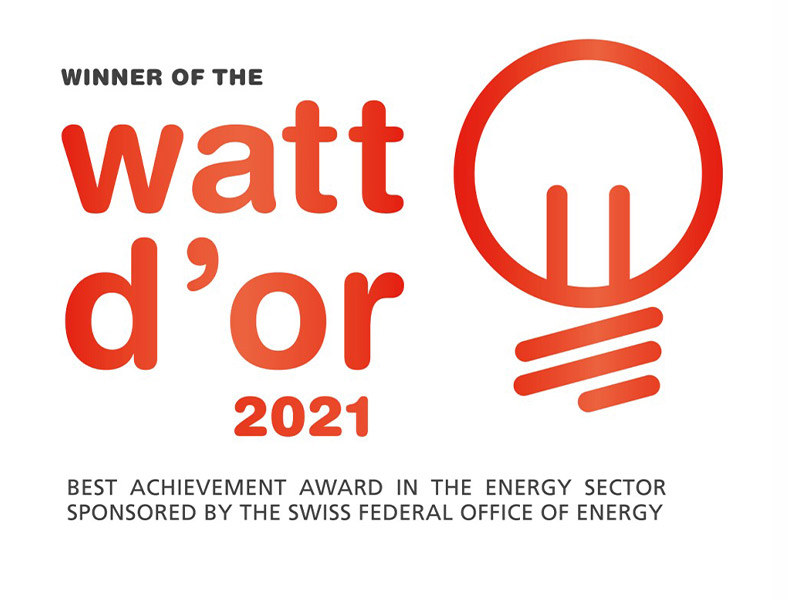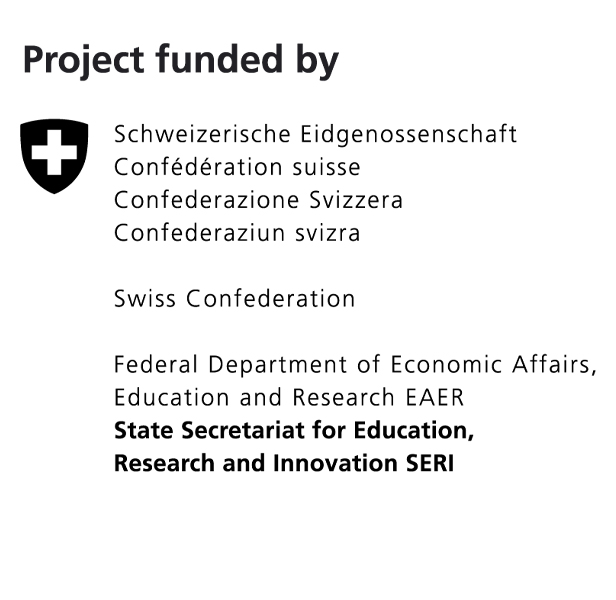Awards
Watt d’Or
Sunage was awarded for the Wohnüberbauung Männedorf project with the Watt d’Or 2021 in the Buildings and Space category by the Swiss Federal Office of Energy for the ecological and economic impact of the project.

Awards

Research & Development
The INFINITE project aims at shaping how we design and perform renovation of buildings in the future to help decarbonising Europe’s building stock. It promotes the use of industrialised prefabricated sustainable envelope kits. Three real demo cases will be set up in Italy, France and Slovenia (+6 other virtual demo cases all over the EU).
Sunage is developing a more standardised BIPV (Building Integrated Photovoltaic) technology to drive the achievement of energy efficient renovated buildings that can be replicated extensively to shape a decarbonised Europe’s building stock.


This project has received funding from the European Union’s Horizon 2020 research and innovation programme under grant agreement No 958397.
The “BIPV meets History” project, approved as part of Axis I – Business Competitiveness, of the Interreg VA Italy-Switzerland 2014-2020 Cooperation Program, aims to increase cross-border collaboration between companies, research centres and public bodies, to create a cross-border value chain and market with the aim to favour the spread and use of integrated photovoltaic solar technologies in the refurbishment of the existing building and landscape heritage.
Sunage developed the best building integrated photovoltaic (BIPV) solution for buildings to respect the heritage and landscape values of the territory and be in harmony with the external surroundings.

Biosphera is the name of a project conceived by Aktivhaus and focused on the construction of houses capable of bringing maximum well-being to their inhabitants. Biosphera 3.0 has pursued complex objectives by developing an itinerant and energetically autonomous housing unit thanks to the contribution of researchers, professionals, universities and companies by adopting the most advanced and innovative technologies available today. The 20-month roadshow touched 12 European cities and the Biosphera 4.0 is on its way.
Sunage developed both the BIPV facade and the PV roof modules to produce energy for 8,000 KWh/year. To maintain living standards at maximum comfort levels, the itinerant housing unit requires on average only 2,000 KWh/year. Therefore, it is an active building that produces four times the amount of energy needed.

The focus of the project REHOUSE is to increase in the scope and productivity of the renovation process, the improvement of comfort and satisfaction of the building inhabitants and users, and the increased use of integrated solutions for the decentralized generation of renewable energy.
SUNAGE PV modules are part of the Renovation Package 5 - Multi-Purpose Facade installed in the Italian demo case. REHOUSE RP5 consists of an innovative prefabricated element composed of a substructure provided by RI Spa and bio- based insulation provided by BIOMAT.


This project has received funding from the European Union’s Horizon Europe research and innovation programme under grant agreement No 101079951

REHOUSE project is supported by the Swiss State Secretariat for Education, Research and Innovation (SERI) under track number (SUNAGE: SBFI No. 22.00345
CIRCMAN5.0 is an initiative aimed at transforming the photovoltaic (PV) manufacturing sector into a more sustainable and efficient industry through the use of circular manufacturing principles. This project focuses on developing a human-centered, AI-aided digital framework designed to optimize the entire lifecycle of PV products—from design and production to end-of-life recovery.
SUNAGE manufacturing site is one of the 4 demo case where the technologies developed in the project will be tested in a real BIPV production.


CIRCMAN5.0 has received funding from the EU Horizon Europe research and innovation programme CL4-2024-TWIN-TRANSITION-01-05 under grant agreement No.101178331.

CIRCMAN5.0 project is supported by the Swiss State Secretariat for Education, Research and Innovation (SERI) under track number (SUNAGE: SBFI No. 24.00638